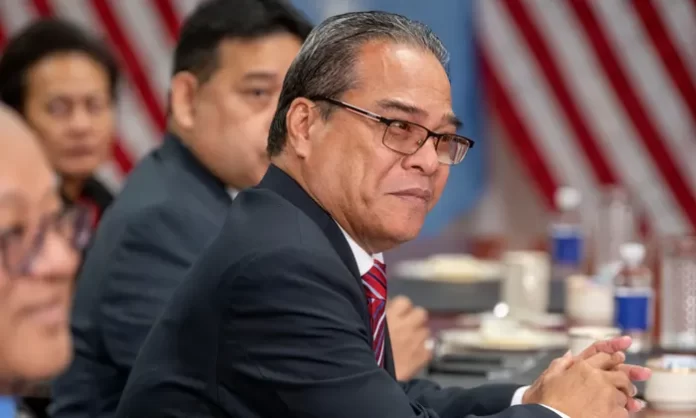The U.S is considering military projects across the Federated States of Micronesia (FSM) as it pushes ahead with plans for a US$400m airport upgrade in the country to boost defence capabilities in the Pacific, President Wesley Simina said.
The region is of growing strategic importance to the U.S amid a battle for influence with China.
FSM has been identified as a key part of the U.S Indo-Pacific strategy aimed at countering Beijing in the region. An agreement between the U.S and FSM, known as the Compact of Free Association (COFA), gives FSM funding and support, while the U.S gains exclusive defence rights to the Pacific nation.
“The Federated States of Micronesia is open for U.S consideration for any kind of defence-related activities, including use of our lands and oceans,” Simina said.
The airport upgrade is on the island of Yap, one of four states that form the FSM. Washington’s plans were made public in budget proposals released last month.
Speaking to the Guardian as part of a series of interviews with Pacific leaders, Simina said the U.S was also looking at the states of Chuuk, Pohnpei and Kosrae for “other kinds of projects”.
“But so far, those are yet to be disclosed,” he said.
Simina said the U.S was “well advanced into its planning in the use of [the] airport area” on Yap and would also conduct more military exercises from the island.
“We know they want to expand it. They want to install different infrastructure there to help support their military activities in Japan,” he said.
The island of Yap is one of four states that form the Federated States of Micronesia (FSM) and is where the airport upgrade will be located.
Katherine Koenig, spokesperson for the Joint Region Marianas mission, which manages U.S military operations in parts of the Pacific, said the proposed budget for the 2025 fiscal year includes US$400m for the development of Yap’s airport and seaport.
“The project will include an extension of the runway to accommodate larger aircraft to land and take off in support of training operation and humanitarian mission at the Yap airport,” Koenig said.
If approved by Congress, an initial amount of US$96m is proposed to be invested in 2025, she said.
Other U.S military sites in the Pacific include naval, air force and marine bases in Guam, as well as an army base in the Marshall Islands.
In its budget proposal, the US air force said FSM and Yap were “strategically located” in the western Pacific.
“Development of Yap Airport is essential because there are very few divert or contingency airfields available as potential United States defence sites in the region,” the U.S air force said.
Michael Walsh, affiliate researcher at the Centre for Australian, New Zealand and Pacific Studies, said the US was seeking to expand airbases in the region to add “complexity” to its operations.
“It is hoped that this increased complexity will make it far more difficult for adversaries to be able to accurately predict the ways the United States military will respond in the event of [any military challenges],” he said, using examples of an attack on the U.S or in the defence of Taiwan.
Yap, which is about 24km long, will also be part of increased U.S military exercises in the Pacific region. Training opportunities were discussed during a meeting between Simina and U.S defence secretary Lloyd Austin in Washington in March.
Austin said they discussed “new opportunities for defence posture cooperation between our two countries”.
Simina said he was working with the U.S defence and air force departments on the details of the exercises.
“As of now, we’re not aware of any specific number of exercises to be done in Yap each year or each month,” Simina said.
In August 2023, the Micronesian government disclosed U.S air force plans to deploy “air defence assets” to Yap. However, details have not been made public.
“The U.S will have to notify us [about any defence assets],” Simina said.
The economic provisions of the COFA agreements were recently renewed, and the FSM is set to receive US$140m each year for the next 20 years from the U.S.
The residents of Yap “have been very receptive and supportive” of the defence developments, Simina said.
“Obviously, there might be some concerns here and there, especially on the environmental side. But the U.S department of Defence is very much aware of that,” he said.














